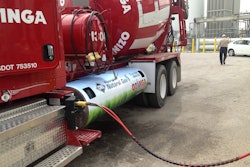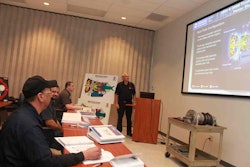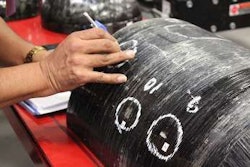Class 7 and 8 truck and trailer combinations are heavy.
A Class 8 commercial truck weighs more than 33,000 lbs. Its Class 7 counterpart weighs in between 26,000 and 33,000 lbs. Combined with a full trailer in tow, on-highway trucking rigs can tip the scales at up to 80,000 lbs.
Carrying that much weight requires a lot of specialized componentry; and no component may be more important than the suspension.
Designed to link a vehicle’s axles with its chassis, suspensions help distribute weight evenly across multiple axles while working with springs and other components to create a smooth ride, says Bill Simmons, field service and warranty manager at Reyco Granning.
In the heavy-duty industry, these systems are incredibly complex.
To successfully assist suspension customers in the aftermarket, distributors and service providers should be well-informed on how commercial truck and trailer suspensions work and how they are maintained.
Heavy-duty truck suspensions are designed to keep vehicles running smooth and drivers comfortable while hauling extreme weights.
To do this, these trucks require suspension and spring systems in place over the front and rear axles.
Front axle suspensions can be integrated into the axle itself or positioned above it, and can operate with leaf and air springs. Rear axles also can operate with multiple spring configurations, and are affixed between the vehicle chassis and axle systems.
Application and usage are important factors in deciding on truck suspension and spring systems. John Devany, sales manager at Betts Truck Parts and Service, says his parent company builds spring systems specific to the duty applications required by its customers.
Devany says “air spring suspension systems are often preferred in fragile or breakable load situations. Leaf spring suspension systems are often preferred in off-road and heavy load situations.”
Bill Nolan, president at Power Brake & Spring, says it’s important for heavy-duty distributors to stock components viable for all duty applications.
“Like most systems on a truck or trailer, the entire suspension is only as good as its weakest link,” he says. “When you replace a spring or suspension component with an inferior part, you risk the integrity of the system.”
The trailer market operates primarily with fixed and slider suspensions, says Howard Adkins, manager of technical services at Hendrickson.
Fixed suspensions are bolted directly to axles and a trailer chassis at a specific point. Common with tanker, platform and dump trailers, Adkins says some fixed suspensions can lift a single axle off a driving surface to eliminate tire wear and improve fuel mileage when hauling lighter weights. They are available in the aftermarket with air and leaf springs.
Adkins says slider suspensions are commonly used with box vans and reefer trailers. They are designed to allow drivers to adjust the placement of the chassis on the suspension, improving maneuverability when necessary.
“With [sliders], you can move your suspension to where it is equalizing the weight on the axles best,” Adkins says.
Spring options for slider suspensions are similar to their fixed counterparts, but can vary in size and placement.
Adkins advises distributors to communicate with suppliers about suspension system configurations when determining what aftermarket components to stock.
New heavy-duty suspension systems also are designed to require minimal service, but it’s still imperative for aftermarket businesses to understand maintenance requirements.
Just because a system is built to last doesn’t mean it’s indestructible.
“Hendrickson tries within the design of its suspension to minimize the maintenance that’s required,” Adkins says. “So while there are no physical actions necessary, we ask customers to look for tell-tale signs of things going badly during visual inspections.”
Simmons says drivers should visually check suspensions during daily inspections. Full-service suspension inspections also are recommended once a year, he says. Nolan says repair facilities should offer these inspections to customers as part of preventive maintenance stops.
A suspension inspection should begin with a visible inspection of the tractor and trailer’s balance, says David Washbish, president at Lexington and Louisville Auto Spring. If level, technicians should then check the equipment’s height before going below to check system components.
Washbish says the suspension and leaf springs should be inspected for cracks and wear, while air springs should be monitored for air loss. Shock absorbers also should be checked for leaks, Adkins says, and bushings, bolts, fasteners and slider pins should be in proper working order.
Nolan says some minor cracks can be welded back into safe operating condition, and technicians should determine if that’s possible as soon as cracks are discovered.
In cases where a component must be replaced, Adkins advises to check the wear on corresponding parts before replacing every unit.
“Sometimes you won’t need to replace everything,” he says, but adds that some components — pivot bushings, for example — will work best if all are replaced at once. “If you just change one and not the other, the wear rate may change across the vehicle.”
If done properly, Simmons says inspections will catch most issues. Repairs made during inspection also significantly reduce service expenses once the equipment leaves the service bay.
“The cost to repair while in the shop is greatly reduced over having to perform a road call,” he says.
For service providers, that’s an important thing to note with customers.
Devany says Betts Truck Parts advises and educates its customers on the importance of having equipment inspected regularly.
“This simple commitment allows the owner to maintain a safe and efficient vehicle,” he says.










